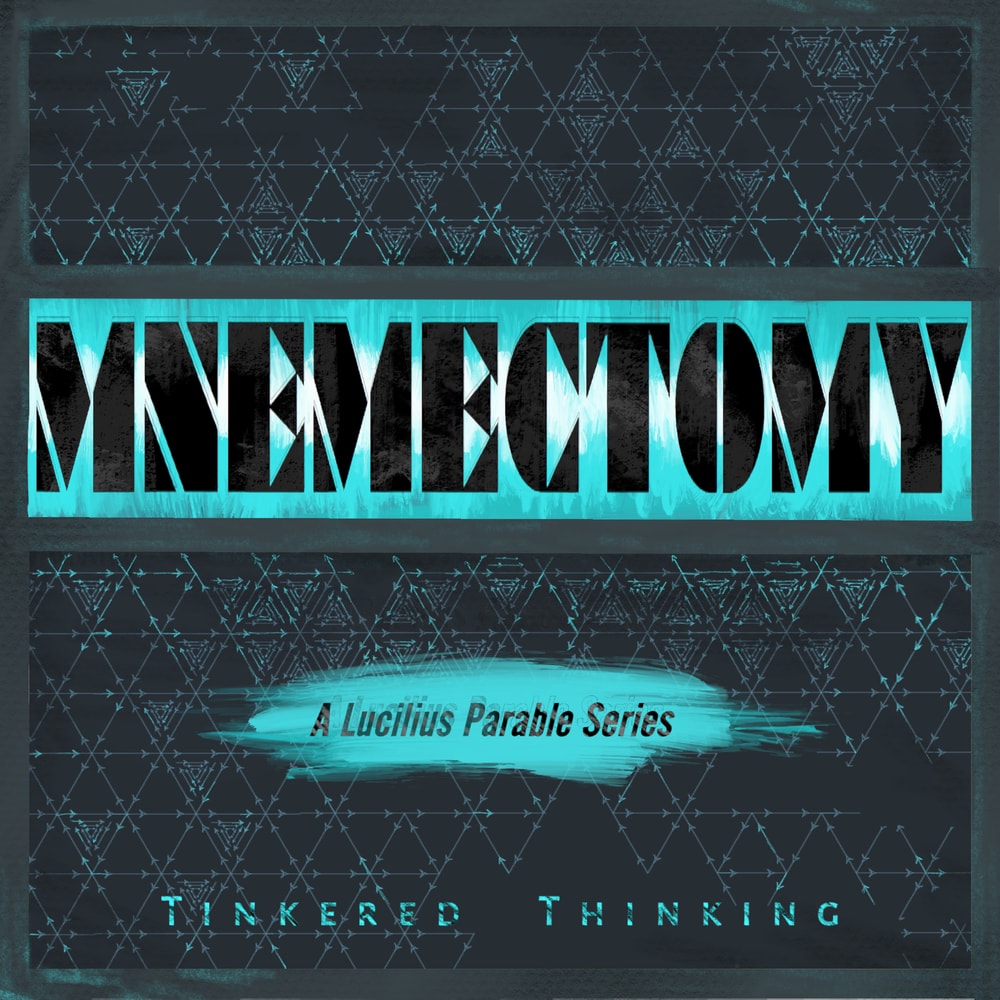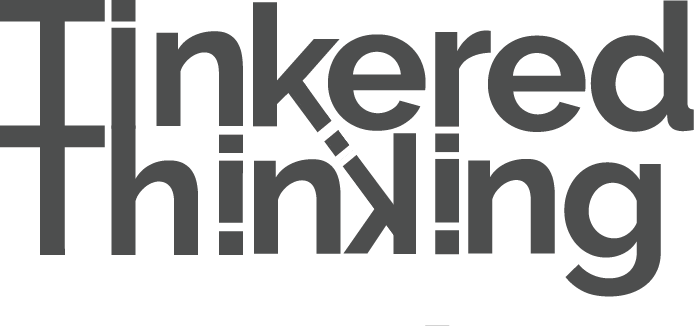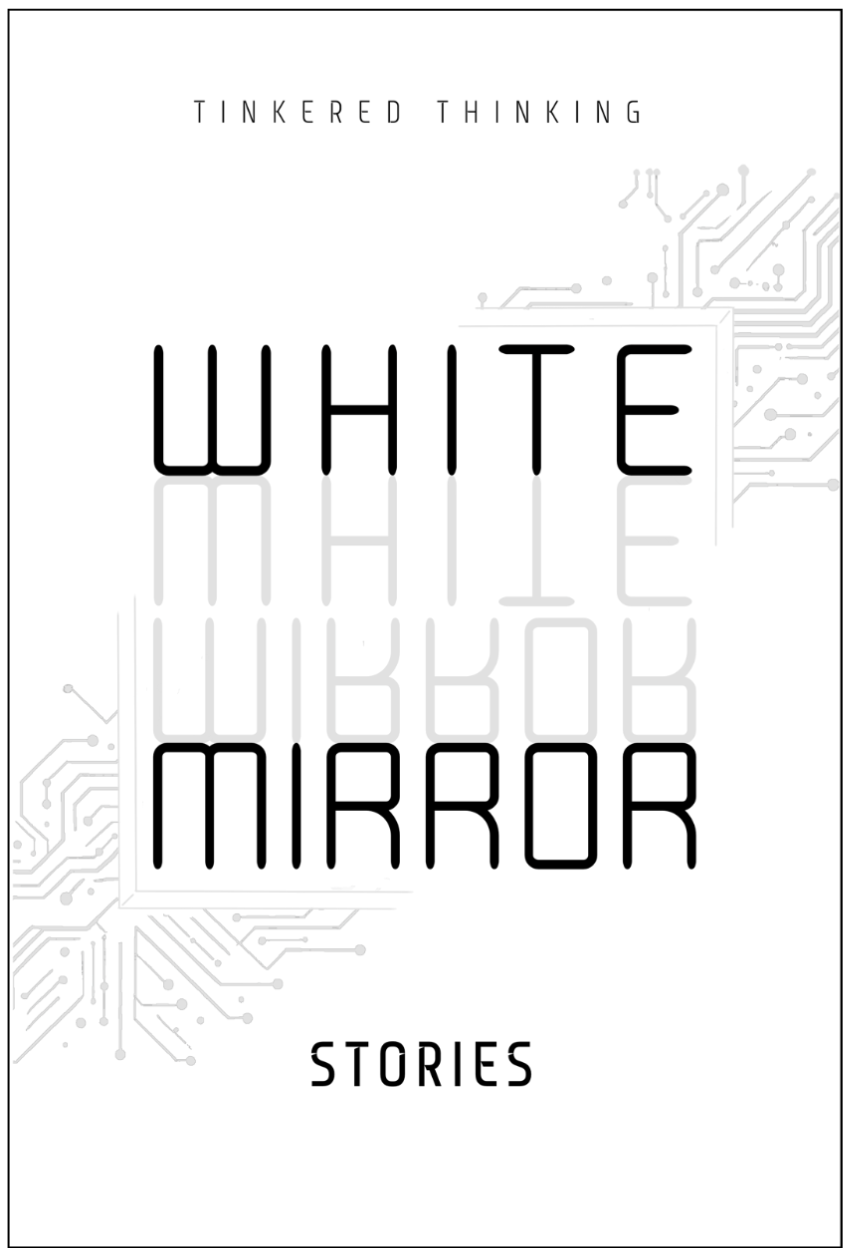Daily, snackable writings to spur changes in thinking.
Building a blueprint for a better brain by tinkering with the code.
subscribe
rss Feeds
SPIN CHESS
A Chess app from Tinkered Thinking featuring a variant of chess that bridges all skill levels!
REPAUSE
A meditation app is forthcoming. Stay Tuned.
COMMUNAL PRIORS
February 26th, 2021
While we’re often reluctant to change our mind about anything, it can still be a private affair. Sitting, thinking quietly, and suddenly, a mind can decide that a new opinion on a topic makes more sense. No fanfare necessary.
A group on the other hand - a group of people cannot silently change their mind. For a group to have a new opinion on a topic, a vast amount of communication has to take place, which wouldn’t be so much of a problem if it weren’t for the fact that someone would have to share that new opinion. Sharing an opinion that is different from the group is risky business. There’s no telling how the group will react to the new idea, and because of this, the fear of being ostracized is at play. This isn’t an issue when we silently change our own mind. There is no prying eye of another that might judge our change in opinion. But in a group the risk of harsh judgement creates a psychological pressure to keep unconventional opinions to yourself.
This fundamental difference in the psychology between solitary opinion change and opinion change on a group level means that one is fundamentally hindered. An individual, with far less friction for updating understanding can figure out the truth of a matter far faster than a group.
We each function on a set of priors, or fundamental ideas about the world. These are indivisible in their simplicity. An easy example is gravity, and our priors about how gravity functions are so deeply embedded in our sense of space and motion that we barely ever think about the fact that some mysterious force is constantly pulling each of us toward the ground. It’s easy to imagine the smile of a first-time astronaut when they finally experience zero-G. There’s little doubt that people have to adjust to the absence of gravity in space. And this adjustment is a sort of updating of one’s priors.
As a group, we have often relied on special sources of “truth” in order to calibrate opinion. Needless to say these special sources have always been varied and, of course, often in conflict with one another. Totalitarian governments try to accomplish the same through state propaganda. When trust in such sources is lost, opinion fractures and wobbles, giving rise to mob mentalities. These structures of thought are more than willing to turn on their own individuals, which perversely makes the opinion more stable. That is, until the opinion as it informs behavior, leads to it’s own destruction by leading the group in an unwise direction.
AUTO-SOLVE
February 25th, 2021
Dreams occupy an odd space. On the whole we don’t think or talk about them too much. And yet it’s something everyone does. And unlike much of the other mundane things that we share, dreams can have the emotional resonance and visual spectacle of any hit show that everyone talks about. Hit shows, of course, usually make a bit more sense. Usually.
It’s a perennial lamentation that we need to sleep. As though it’s wasted time that could otherwise be put to better use. But this is much like a marketing executive coming across a tig welder and saying “I have no need for this.” Just because it’s use is not immediately obvious does not mean that something is not useful.
What is sleep, or rather the conscious and semi-conscious parts of it are simply improperly utilized?
Now, with the world of lucid dreaming where a person gains conscious awareness in their dreams, the potential fun and utility is huge, but it requires a fair bit of practice and training to get the hang of. That being said, there is a far more useful and accessible angle on all of this talk of sleep and dreams.
It’s best encapsulated in the recommendation to “sleep on it.” Often the morning brings fresh insight. But this can be consciously directed nearly every night.
If by simply thinking about a problem in life that needs to be solved while drifting off to sleep and consciously asking to work on the issue while sleeping, and to dream about it, and to remember in the morning, the ability to make leaps of progress is frankly incredible.
After hearing a casual description recently, I decided to try and implement this regarding a set of problems that involve an unrelated project. Suddenly issues that have been sticking points for months had seemingly obvious solutions. And this has happened enough times and with enough conscious regularity that it doesn’t seem unwise to link correlation and causation here.
Edison often used used a similar trick. Whenever he was stuck on an issue, he would hold a heavy ball bearing in one hand and let himself doze off for a nap while he thought about the issue. Once he fell asleep, his hand would relax, drop the ball bearing and the clatter would wake him up, and with it, he’d have the solution to his issue.
We can do something like this every night, if only we try to consciously use our brain as a tool that can chew on a problem on a kind of creative autopilot.
INCENTIVE STRATIFICATION
February 24th, 2021
The battle between good and evil is the eternal struggle, the one that underpins the stories of all great religions, literature, even film, and perhaps all media. The whole human race is even perhaps just an elaborate search algorithm that is tasked with figuring out exactly what is good, and by diametrical default: what is evil.
The pair, as concepts seem pure in their opposition. The whole world seems to stratify nicely as though the border between good and evil is the sharpest of knives, cleaving any and every situation cleanly so that the severed pieces flop into their respective categories.
As we abandon nuance, and the difficulty of making sense of the larger context, this framework becomes even more and more seductive. Suddenly it seems that everything can be reduced simply and irrevocably. There is a certain comfort in this idea. It’s seductive first and foremost because it’s so easy. But it’s akin to a man with a hammer seeing everything as a nail. Such reductionism suddenly reveals itself as a bad idea when that man with the hammer mistakes someone’s head for a sensible target.
The issue with such reductionism, and especially with this eternal pair of good and evil is that they are not diametrically opposed, but interwoven, each making up subtle and fundamental strands of the other. To try and cleave such things just ends up damaging the whole. Many stories wonderfully weave these good and evil tropes showing how confusing they can be interwoven, and yet, this interweaving and at core good and evil each themselves boil down to a single concept: incentives.
The story’s hero who has captured the villain believes he is doing good by doing harm in order to learn where his kidnapped daughter is being held. But the hero is simply incentivized to do such harm, and in this case the incentive appears to be very good. If however, the villain turns out to be brain damaged and saw someone try to attack the girl and saved her and brought her home to keep her safe, fearful that someone else might try to hurt her, then the villain suddenly doesn’t seem so evil. He was clearly incentivized to “do good”, which was perceived as “evil” by others who could not understand the situation correctly.
Upton Sinclair once said that it’s difficult to get a man to understand something when his salary depends on his not understanding it. Money is just a stand in here. We all experience a pretty powerful incentive when money is involved. The deeper point of Sinclair’s statement is that we can simply be incapable of understanding something if we are appropriately incentivized not to.
Incentive as a concept runs deeper than just the stick and the carrot that either entices us onward or pushes forcefully. Incentive determines much of the shape, direction and porousness of one’s perspective. The surprising thing about incentive is that it’s neither good nor evil. Such a definition requires a certain perspective, a certain situation and station from which to view what’s going on. Incentive on it’s own is just a vector. What flavors it one way or another isn’t even it’s source nor it’s aim, but the location of those things in relation to other people. We are all essentially vectors, incentivized by a small number of incentives that are much the same across people, but which ultimately cause people to conflict when these individual vectors collide and intertwine.
HABITS OF INTONATION
February 23rd, 2021
“Well, I didn’t mean it that way.” So long as a person breathes a person is guilty of having uttered this statement. And yet, it’s a strange one. Aside from valid issue of multiple interpretations and the slippery way clear-seeming sentences can be sensical in a different way from a different perspective, much misinterpretation is often caused by intonation. Namely, the intonation doesn’t match the intention and therefore flavors the sentence with an unintended delivery.
This harks of an improve exercise. Simply think of all the different intonations that can be imparted to a word as simple as “hey”. This single word can be used to alert someone of danger when said loudly, quickly and clearly, and perhaps with a rising volume. It can be said slowly, in a way that hopefully invites more conversation, or suspicion depending on the timbre of voice. It’s further improv exercise of humorous exercise to try and have an entire conversation using just a single word in different intonations, like a Pokemon.
The problem is further framed by the perennial axiom: it’s not what you say, it’s how you say it.
The strange thing is that the one of the main avenues for how we say something can be so far divorced from what we are trying to say, or simply: our intonation doesn’t always match our intention. I didn’t mean it that way. Often this is said because a sentence comes out while the tongue is still hot with an emotion. We warp our own meaning without. Meaning to.
The most disconcerting possibility is that we could simply be operating on a habit of intonation. For example, when someone raises their voice, chances are very high their now disgruntled companion in dialogue will also raise their voice, and so then the two watched each other up to a pitch. And why? Do we except that this is some hardwired default in the human system? Or is there even a possibility that it’s just a habit of behavior, mapped onto speech and intonation?
The unfortunate news is that in order to fix a bad habit, the creation of a new good habit is needed to paint it over, and habits are not the easiest download for the mind.
One habit that covers this ground without explicitly designed to is a practice of mindfulness. With enough time spent trying to be mindful, that mindful perspective starts to become a habit, and it eventually pops up during one of these instances when a sentence has flown out with the wrong intonation attached to it. In a moment of mindfulness, this suddenly seems curious in a bizarre way, as though writing with a black pen for a number of pages and then suddenly seeing the ink turn pink. Mindfulness allows a chance to pause and simply think for a moment: what was that? At the very least it’s just noticing an inconsistency - one that undermines our aims in such moments. And with that explicit realization, it can be caught preemptively the next time and then our chances of communicating a bit better, go up.
PSYCHOLOGY OF LEARNING
February 22nd, 2021
It’s a bit of a red herring that difficult subjects require an impressive amount of intellect. All learning is some sort of mishmash of pattern recognition, some memory required for recognition to happen and a little creativity to mix those patterns. The reason why learning can be so difficult isn’t because there is something inscrutably complicated about these patterns - certainly some are quite complicated, but it has far more to do with our emotional state and the way it changes as we interact with each part of the process of learning.
Many people get frustrated during the first part: when we are trying to find a pattern in the noise of a new subject. These negative emotions that pop up make the process even more difficult. Noticing something subtle, some kind of pattern that exists between disparate parts requires a calmness, and a clear focus. Frustration, aggravation, exasperation - the experience of these emotions is antithetical to clarity and calm focus. The task gets harder, which makes the emotions heighten, making the potential for success plummet until of course, the towel is thrown in. We give up before ever really getting started.
If however, we somehow maintain the patience for that first period and simply wait calmly with focus until the brain picks out a pair of details, or a string, then the process gets easier as we go. Success, not just with the process of learning, but also emotionally is a compounding process. The noticed pattern or pattern-fragment is not hard to remember, or rather recognize. This combined with the subtle feeling of success and progress that comes with actually seeing structure in the noise combine, virtuously, like a fuel to propel the student forward. And then when creativity is needed to mix, match, and manipulate patterns to create something new, again frustration, aggravation, only cramp the goal. While certainly creativity can benefit from some kinds of stress, it rarely benefits from a sense of failure with the process of learning itself.
We can become conscious of our own psychology of learning. Warming up to a subject with a few easy passes, perhaps a few tiny exercises or projects. But we can also realize when those first few experiences of the subject are too easy, or too boring, which fails to fuel curiosity or drive to learn more. With a sensitivity for our own learning psychology we can become intimately aware of the optimal challenge and how much more difficulty or ease we need.
A great teacher calibrates this for a student on the fly, but the best student takes on this task themselves, toggling the throttle of difficulty while always moving forward, making progress and never losing momentum, both on the topic and emotionally.
-compressed.jpg)





